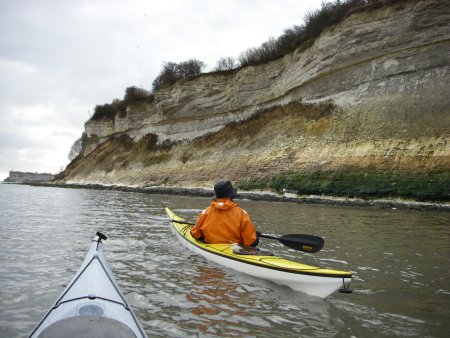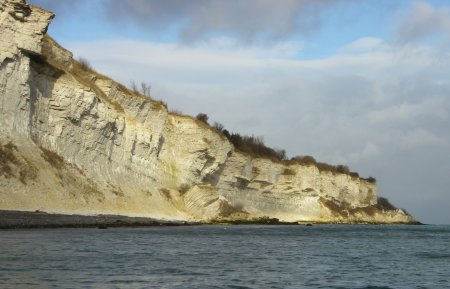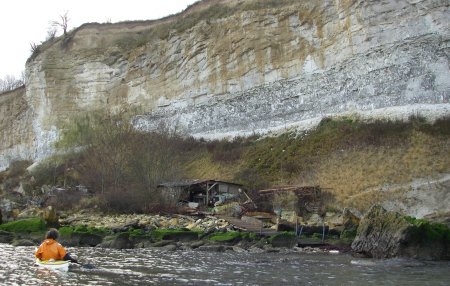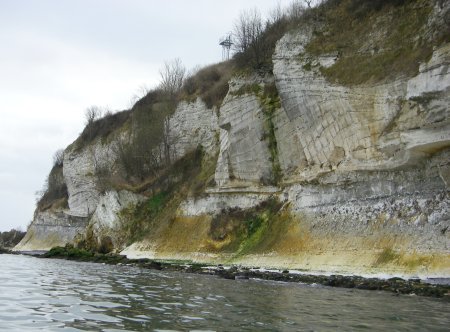Bjørn and Tim set out from the beach at Præsteskov, just north of Stevns Klint, which is a chalk and limestone cliff about twenty km south of Copenhagen. A westerly gale was blowing but we naively assumed that we would enjoy a calm paddle in the lee of the high cliffs.

This is Bjørn trying to identify the thin layer of marl in which Luis Alvarez, in 1980, discovered a high concentration of iridium, suggesting that a meteorite impact might have caused the extinction of the dinosaurs.

Further on, a rare burst of sunshine illuminated the pale yellow chalk cliffs. Just out of the frame to the left is a vast quarry whose opening to the sea caused an intense wind eddy, which can be seen darkening the water in the middle distance.

A little further south we encountered this rare example of architectural anarchy in Denmark – an outpost of Christiania in one of the roughest parts of the Danish coast. The access path to the right crosses a chalk scree slope which must be impassable in wet weather, then a steep ladder leads to the cliff top.

The cliff has been quarried for centuries. Here you can see traces of the vertical holes where blasting charges were placed to crack huge blocks off the cliff onto the beach. The soft limestone has been used to build aristocrats’ houses in Copenhagen and several churches in the local area, notably the church perched on the clifftop at Højerup. That was our destination for this short November tour but as we rounded the corner the force of the south westerly gale gradually became apparent, forcing us to turn back.